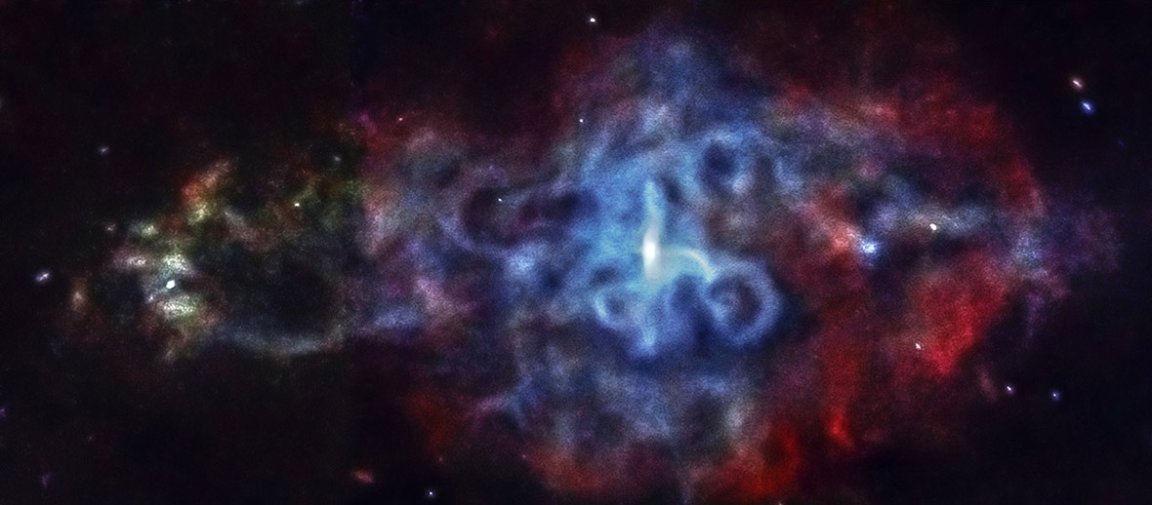

All the way back in 1181 AD, astronomers from Japan and China recorded seeing a bright, unusual pinpoint of light in the sky. Now, in a reprocessed image released in celebration of Chandra’s 15th anniversary, the source of this light is revealed.
Called 3C58, you are looking at the aftermath of a supernova. At the heart of 3C58, there is a rapidly spinning pulsar — a neutron star, or the dense remnant of a once-massive star, with more exotic properties — encased by a ring of x-ray emission. This pulsar, in turn, has large jets of radiation emanating from its poles (pictured to the left and right), each extending several trillion miles across.
When high-energy particles from the jets meet the object’s magnetic field, they create the complex loops surrounding the central star, which closely resemble the ones seen around the famous Crab Pulsar (the Crab Nebula’s proteginer star). NASA notes that “the 3C58 pulsar, the Crab pulsar, and a growing list of other pulsars provide dramatic proof that strong electromagnetic fields around rapidly rotating neutron stars are powerful generators of both high-energy particles and magnetic fields.”
SN 1181, the official name of the supernova remnant, is one of just a handful of supernovae ever bright enough to be seen by the naked eye, and it reportedly remained visible for 181 days before it faded from view. It must be said, however, that there is some controversy surrounding its official designation. An investigation that took place in 2013 revealed that it might be much older and more distant than previously predicted, therefore it might not be associated with SN 1181 after all.
For further information:
The pulsar in 3C58 can’t be seen directly in this image, but its presence has been deduced from an earlier Chandra discovery, and confirmation at radio wavelengths, of rapid (66 millisecond) pulsations. The present observations provide strong evidence that the surface of the 3C58 pulsar has cooled to a temperature of slightly less than a million degrees Celsius.
The relatively “cool” surface temperature was a surprise to astrophysicists, since the standard theory for pulsar cooling predicts a much warmer surface at an age of only 830 years. The cooling of a pulsar is due to collisions between neutrons and other subatomic particles in its ultra dense interior where one teaspoonful of matter can weigh more than a billion tons. These collisions produce neutrinos that carry away energy as they escape from the star.
The speed of the cooling in 3C58 indicates that the interaction between neutrons and protons are not well understood at the extreme conditions in pulsars, or that an exotic form of subatomic matter is present.
[Reference: Chandra]
See a larger image here.